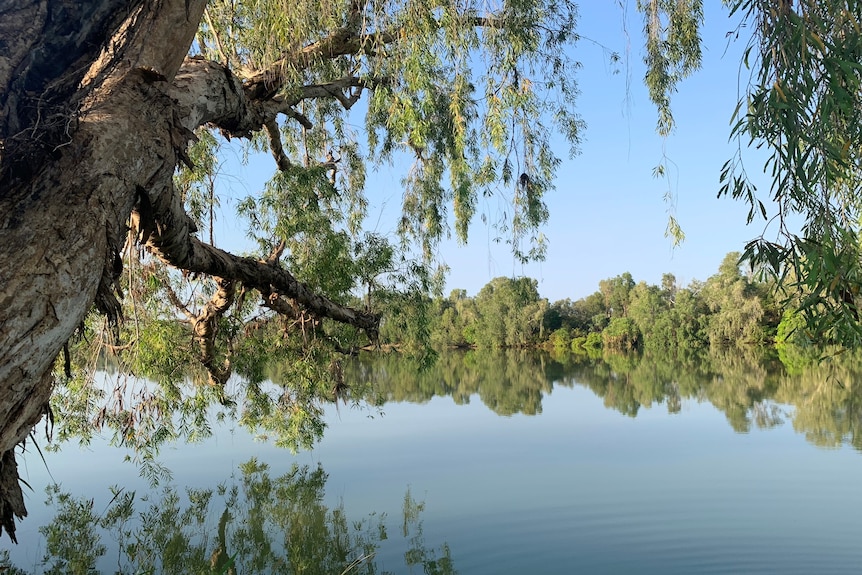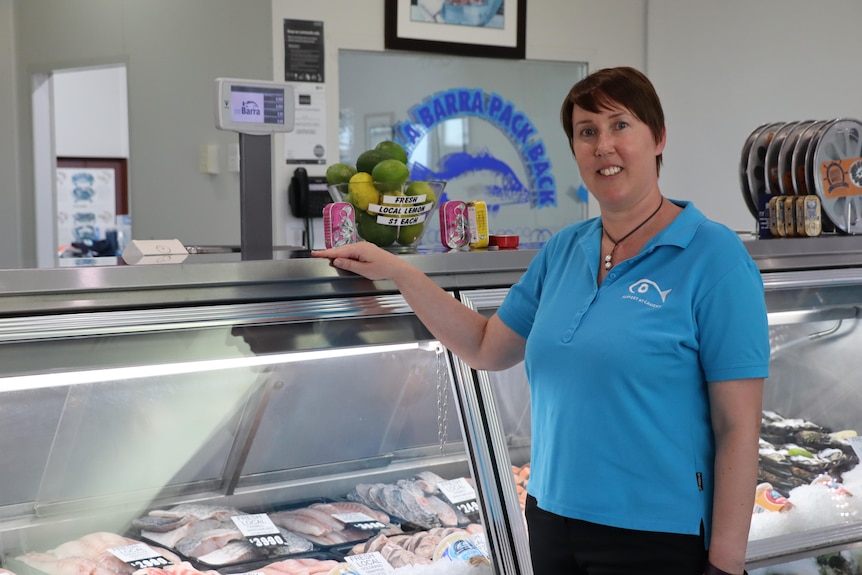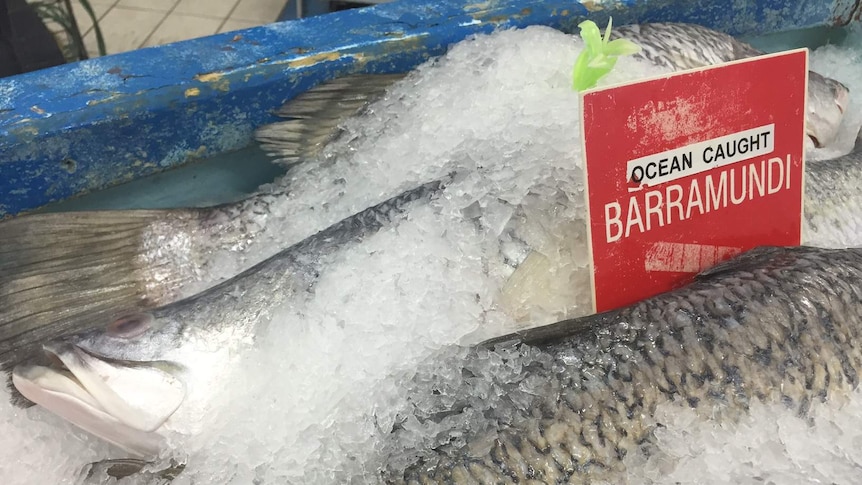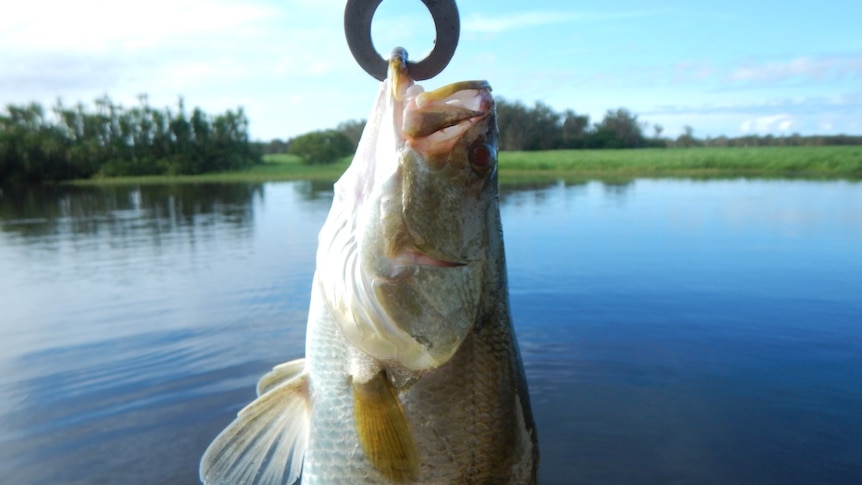Limits on Commercial Barramundi Fishing: Effort Limits Introduced in NT Fisheries
NT Fisheries has recently implemented “effort limits” on commercial fishers operating in three major barramundi fisheries. These limits aim to regulate the use of commercial gill netting, which will be capped at previous levels.
Despite the introduction of these limits, commercial fishing boats will still be able to deploy thousands of meters of fishing nets daily for eight months in some of the Northern Territory’s most popular recreational fishing river systems. This temporary plan allows for continued commercial fishing activities without restricting the quantity of fish that can be caught.
The specific areas affected by the interim effort limits are the Roper River, Moyle River, and Anson Bay. NT Fisheries implemented these changes in response to the closure of prime Top End fishing spots by traditional owners in the previous year. These closures were prompted by concerns about the bycatch, which includes fish that are unintentionally hooked or entangled in gill netting.
However, there is an ongoing debate between recreational and commercial fishing industry representatives regarding the long-term harvest strategy for the iconic Northern Territory barramundi. Recreational groups advocate for weight-based quotas, while commercial representatives argue that the current measures are sufficient to maintain healthy fish stocks.
For more information on limits and regulations regarding commercial barramundi fishing, please visit our site 60time.com. Additionally, don’t forget to follow us on social media platforms like Instagram (@60time.com) and Facebook (@60time.com) for regular updates.

Commercial barramundi fishing in the Roper River will be limited to the same level as last year’s activities, according to a recent announcement by NT Fisheries. The decision comes with concerns that this cap may result in commercial fishing being redirected to areas that are popular among recreational and tourism fishers. This, in turn, could potentially lead to an increase in commercial fishing efforts in these areas, surpassing historical levels. Moreover, it may also result in more frequent encounters between recreational fishers and commercial operators, which could have a negative impact on recreational catches and experiences. For more information on commercial barramundi fishing, please visit our site 60time.com. Additionally, don’t forget to follow us on social media at https://www.instagram.com/60time.com or on Facebook @60time.com.
Key NT Waters Closed to Fishers
The Northern Territory (NT) Government’s attempt to negotiate commercial fishing access with the Northern Land Council, representing traditional owners, has resulted in the closure of key NT waters to fishers. This ban specifically limits commercial barramundi fishing in certain areas.
The decision to ban fishers from these key NT waters comes after unsuccessful negotiations between the NT Government and the Northern Land Council. The Northern Land Council, as the representative body for traditional owners, was unable to reach an agreement with the government regarding commercial fishing access. As a result, the NT Government has implemented this ban to protect the interests of traditional owners and preserve the local ecosystem.
This ban has significant implications for commercial barramundi fishing in the NT. Fishers who rely on these waters for their livelihoods will now have to find alternative fishing locations or explore other avenues of income. The closure of key NT waters highlights the importance of sustainable fishing practices and the need for effective collaboration between government bodies and traditional owner representatives.
To stay updated on the latest developments regarding fishing restrictions and other related news, please visit our site 60time.com. Additionally, don’t forget to follow us on social media, such as Instagram (@60time.com) and Facebook (@60time.com), for more updates and engaging content.

Limits on Commercial Barramundi Fishing in the Northern Territory
About 70% of the Northern Territory’s commercial barramundi industry is currently controlled by Wild Barra, a Western Australia-based company. The industry has recently seen the implementation of new limits on commercial barramundi fishing, allowing operators to fish the rivers at a level similar to the year with the highest commercial activity over the past decade.
Last year, during the eight-month barramundi season, the Roper River witnessed the highest commercial fishing effort in the past decade. According to NT Fisheries, the equivalent of 10 nets spanning 100 meters were deployed daily. This level of fishing will be permitted again in the Roper River this year. Anson Bay, located at the mouth of the Daly River, has the highest limit, allowing the laying of up to a dozen 100-meter nets every day throughout the season, which runs from February until the end of September.
Wild Barra director, Cameron Berryman, expressed his optimism for this year’s harvest during an interview on the ABC Country Hour. He hopes to yield between 350 and 400 tonnes of barramundi and threadfin salmon.
These new limits on commercial barramundi fishing aim to strike a balance between meeting the demand for barramundi in the market and ensuring the sustainability of the species. By allowing fishing at levels similar to the year with the highest commercial activity, the industry can continue to thrive while protecting the barramundi population.
For more information on commercial barramundi fishing and other related topics, please visit our site 60time.com. Additionally, don’t forget to follow us on social media, such as Instagram or Facebook (@60time.com), to stay updated on the latest news and developments in the industry.
Different opinions among stakeholders regarding sustainability and gill netting
Katherine Winchester, the chief executive of the NT Seafood Council (NTSC), has referred questions about the 2024 effort limits for commercial barramundi fishing to NT’s Department of Industry and Trade. However, she emphasized that the barramundi population in the territory remains in good health.
According to Ms. Winchester, there are no sustainability concerns regarding barramundi stocks. She stated, “We are well aware that the stocks are currently thriving, and our goal is to maintain their healthy state.”

According to Katherine Winchester, there is no sustainability issue with barramundi stocks, which contradicts claims made by the Amateur Fishermen’s Association of the NT (AFANT) president, Warren de With. De With argues that localized heavy fishing pressure could deplete fish stocks in specific shared areas, despite claims of a healthy biomass across the entire territory. He also raises concerns about the industry’s ability to prevent bycatch from gill netting, stating that protected species may inadvertently get caught in the nets. The NTSC acknowledges the need for improvement in this area and plans to equip 50% of its commercial fleet with real-time camera monitoring by mid this year.
Warren de With further advocates for weight-based quotas on commercial fishing to protect the viability of recreational fishing. He questions the effectiveness of the strategy to conserve fish numbers in shared areas and highlights the potential impact of commercial activity on fish stocks in the Roper and Daly Rivers. Despite the NTSC’s assertion that the use of gillnets is “highly selective,” only half of its commercial fleet currently has real-time camera monitoring to prevent unintended bycatch of protected species. Katherine Winchester, representing the NTSC, aims to have the full fleet covered by next year.
In conclusion, while Katherine Winchester maintains that there is no sustainability issue with barramundi stocks, Warren de With and the AFANT express concerns about the impact of commercial fishing on fish stocks in specific areas and the potential bycatch of protected species. The NTSC acknowledges the need for improvement in monitoring and aims to equip its commercial fleet with real-time camera monitoring to address these concerns.
For more information on barramundi fishing and related topics, please visit our site 60time.com.
Don’t forget to follow us on social media for updates: Instagram and Facebook.
Anticipated Release of a Comprehensive Barramundi Management Plan
A comprehensive management plan for the long-term sustainability of barramundi fishing is expected to be unveiled later this year. This plan aims to establish clear guidelines and regulations to limit commercial barramundi fishing and ensure the preservation of this valuable species.
Closure of NT fishing ground impacts commercial barramundi fishing
The Northern Territory is known for its barramundi fishing season, which attracts many commercial fishing boats. However, this year, the industry is facing a setback due to the closure of a fishing ground. As a result, some boats are unable to participate in the barramundi fishing season and are forced to stay in Darwin.
The closure of the fishing ground has had a significant impact on commercial barramundi fishing. Boats that rely on this fishing ground for their livelihoods are now facing limitations and challenges. This closure has disrupted their fishing plans and has caused them to miss out on potential profits during the barramundi season.
The decision to close the fishing ground has not only affected the commercial fishing industry but also the local economy. The barramundi season is a major tourist attraction, and many visitors come to the Northern Territory specifically for barramundi fishing. With the closure of the fishing ground, these tourists may be disappointed and may choose to visit other destinations instead.
It is important for the authorities to monitor and manage fishing grounds effectively to ensure sustainable fishing practices. While the closure of the fishing ground may be necessary for conservation purposes, it is crucial to consider the impact it has on the livelihoods of those in the commercial fishing industry.
In conclusion, the closure of the fishing ground in the Northern Territory has had a negative impact on commercial barramundi fishing. This closure has forced some boats to remain in Darwin instead of participating in the barramundi fishing season. It is essential for authorities to strike a balance between conservation efforts and supporting the livelihoods of those in the fishing industry.

Reparaphrase:
Both the NTGFIA and AFANT are urging the NT fisheries department to adopt weight-based quotas to monitor fish populations in heavily fished regions. According to Mr. de With, the necessary data is readily available, allowing for the easy compilation of catchment-specific tonnage figures on a seasonal basis. While the industry continues to debate quotas, limits, and sustainability, Wild Barra’s commercial boats are preparing to set sail in the Daly and Roper Rivers, expecting favorable outcomes due to recent rainfall. Mr. Berryman is hopeful that this year’s harvest will yield approximately 350 to 400 tonnes of barramundi and threadfin salmon.



